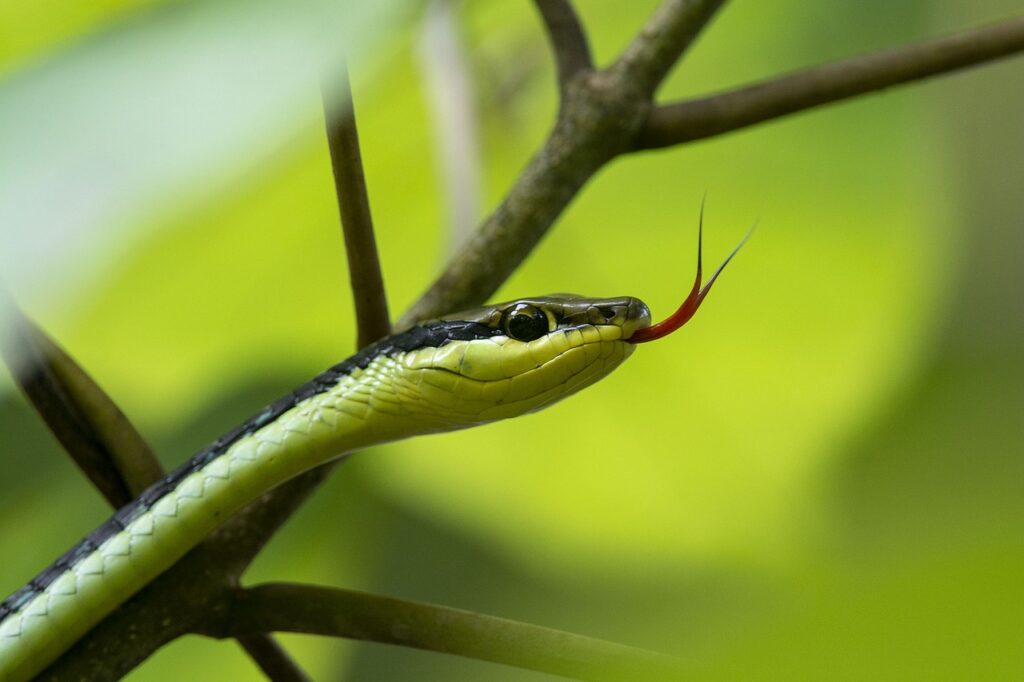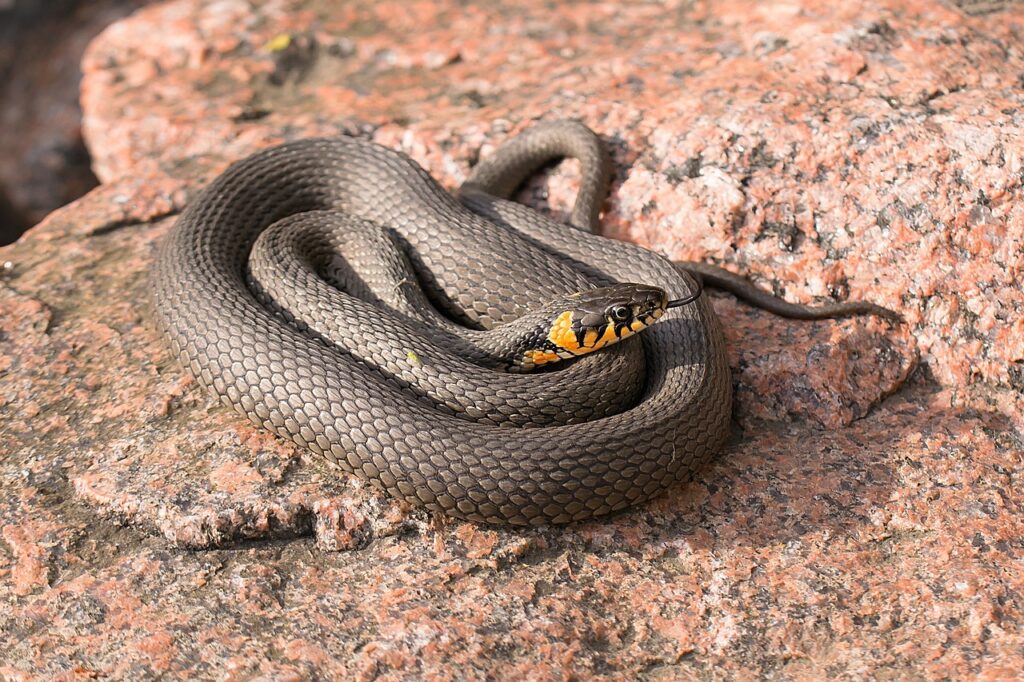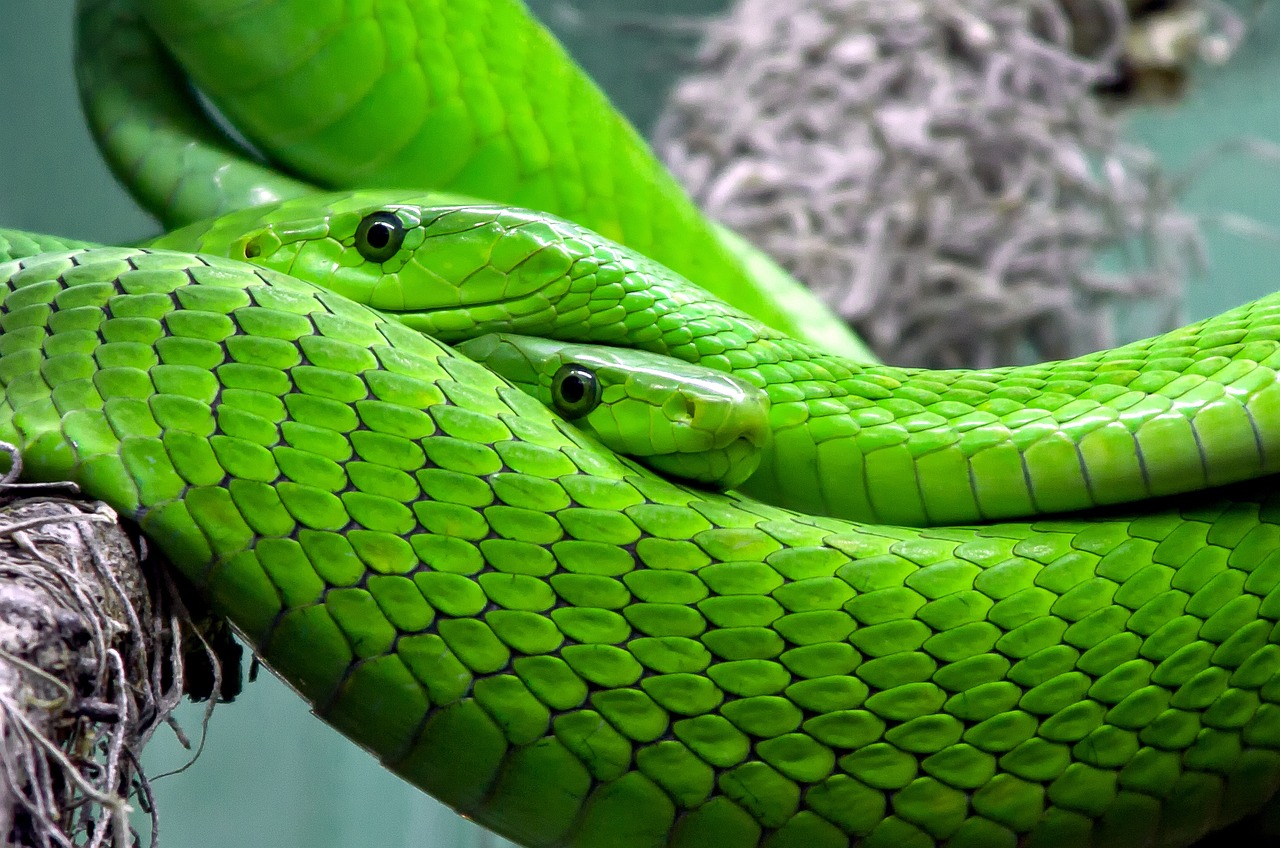In the mesmerizing world of reptiles, snakes stand out as remarkable creatures. Their elegance, stealth, and unique adaptations have intrigued humans for centuries. Among the many fascinating aspects of snake biology, snake senses play a vital role in their daily lives. In this article, we’ll dive into the extraordinary sensory world of snakes, exploring how they see, smell, and feel their way through their environment.
You may also want to know how snakes mate.
Snake Senses: Vision in Snakes
Exploring the Unique Snake Vision
When we think of vision, snakes might not be the first animals that come to mind. However, these creatures have a fascinating way of seeing the world. Snakes’ eyes are equipped with specialized adaptations that allow them to detect movement and changes in light levels, making them excellent predators. We’ll uncover the secrets of snake vision and how it helps them survive in the wild.

Adaptations for Hunting and Survival
The eyes of snakes are adapted to different environments. Some, like tree-dwelling snakes, have excellent binocular vision, allowing them to judge distances accurately when hunting. Others, like burrowing snakes, rely more on light-sensitive cells to detect prey. We’ll delve into these adaptations and the incredible diversity of snake vision.
Olfaction: The Sense of Smell
How Snakes Use Their Keen Sense of Smell
Snakes have a remarkable sense of smell, which is crucial for finding food, detecting predators, and locating potential mates. We’ll explore the anatomy of their olfactory system and how they use their forked tongues to gather scent particles from the air and ground. This ability is vital for their survival in various habitats.
The Importance of Pheromones in Snake Communication
Pheromones play a significant role in snake communication. These chemical signals are used to convey information about territory, mating readiness, and more. We’ll uncover how snakes interpret these pheromones and how it influences their behavior and interactions with other snakes.
Feeling Their Way Around
The Role of Touch and Heat Detection in Snake Senses
Snakes have a highly sensitive sense of touch. Their skin is covered in specialized scales and sensory organs that allow them to detect vibrations in the ground and movements in the air. Additionally, some snakes possess infrared-sensitive pit organs that can detect the heat emitted by warm-blooded prey. We’ll explore how these sensory adaptations help them navigate their environment and hunt effectively.
How They Navigate and Hunt Using Their Skin
Snakes often move in total darkness, relying on their senses to locate prey and avoid obstacles. Their ability to “feel” the environment through their skin is nothing short of remarkable. We’ll discuss how snakes use their body to sense temperature gradients and textures, enabling them to make precise movements and ambush unsuspecting prey.

The Sensory Landscape of Pit Vipers
Delving into the Specialized Heat-Sensing Abilities of Pit Vipers
Pit vipers, a group of venomous snakes, possess a unique sensory organ known as the heat pit. These pits can detect even minor temperature differences, allowing pit vipers to locate warm-blooded prey with astonishing accuracy, even in complete darkness. We’ll uncover the mechanics of these heat-sensing pits and the advantage they provide in the world of snake predation.
The World of Snake Senses Beyond Sight
Synthesizing All Snake Senses and Their Role in a Snake’s Life
In the grand scheme of nature, snakes are a testament to the diversity of sensory adaptations. From their vision to their keen sense of smell and touch, and the specialized abilities of pit vipers, we’ll bring together all these sensory elements to understand how they shape a snake’s life and behavior.
Admiring the Remarkable Adaptations of Different Snake Species
Finally, we’ll marvel at the astounding variety of snakes and their unique sensory adaptations. Each species has evolved to thrive in its specific environment, making snakes one of the most successful and intriguing groups of reptiles on our planet.
Conclusion
In conclusion, the world of snake senses is a captivating journey into the extraordinary. Snakes’ remarkable abilities to see, smell, and feel their surroundings allow them to thrive in diverse ecosystems. As we gain insight into their sensory world, we gain a deeper appreciation for the complexity of nature’s creations.
FAQs (Frequently Asked Questions)
- Do all snakes have the same sensory abilities? No, the sensory abilities of snakes can vary significantly depending on their species and habitat. Some have excellent vision, while others rely more on their sense of smell and touch.
- Are snakes completely deaf, or can they hear vibrations? Most snakes lack external ears and are considered deaf in the traditional sense. However, they can sense vibrations through the ground, which helps them detect approaching threats or prey.
- Do all snakes use pheromones for communication? Pheromones play a significant role in snake communication, but the extent to which they are used can vary among species. Some heavily rely on pheromones, while others may use visual or tactile signals more prominently.
- Can snakes see in complete darkness? Snakes cannot see in total darkness, but their specialized vision adaptations allow them to see in low light conditions. They may also rely on their other senses, such as touch and heat detection, to navigate in darkness.
- Are all pit vipers venomous? Pit vipers are a group of snakes that includes both venomous and non-venomous species. It’s essential to differentiate between them, as venomous pit vipers can pose a danger to humans and other animals.

